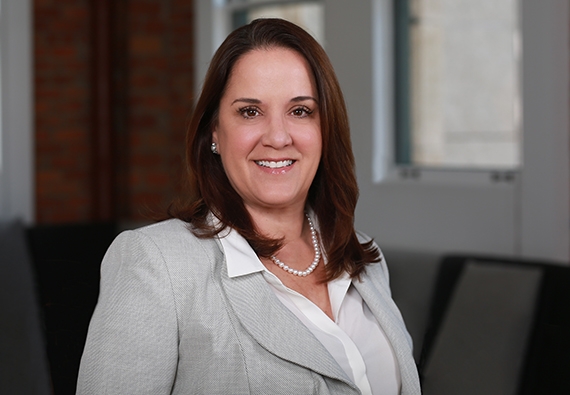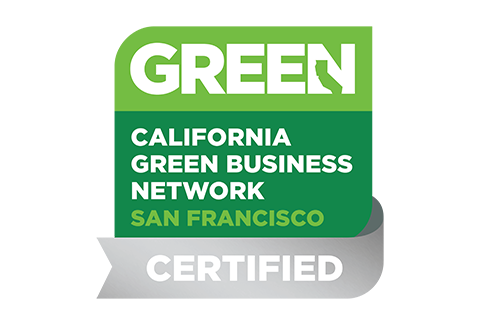Treasury Department Guidance Will Stimulate Opportunity Fund Investments
The Opportunity Zones Program (OZ Program) aims to infuse capital into low-income communities known as qualified opportunity zones (QOZs) by offering tax-advantaged investments benefiting electing Qualified Opportunity Fund (QOF) investors including:
- A temporary deferral (until 12/31/2026) on the taxation of capital gains reinvested in a QOF
- An up to 15% reduction on the eventual taxation of such deferred capital gains; and
- A permanent exclusion from taxable income of QOF appreciation via a basis step-up election if the QOF investment is held for at least 10 years.
Although the OZ Program has been in existence for some time now, investors have been slow to take advantage of the program due to lack of guidance on many issues. However, the Treasury Department recently issued proposed Treasury Regulations, a Revenue Ruling and taxpayer forms that answer many important questions regarding the OZ Program and that should stimulate QOF investments. Here is a summary of some of the key issues that were addressed in this guidance.
I. Investor Issues
Gains Eligible for Deferral: Only capital gains are eligible for deferral under the OZ Program. Consequently, depreciation recapture and other items that trigger ordinary income inclusion will not be eligible for deferral. Gains arising from a sale or exchange with a related person are not eligible for deferral.
Types of Taxpayers Eligible to Elect Gain Deferral: Any taxpayer that recognizes capital gain is eligible to elect to participate in the OZ Program. Special rules exist for partnerships and other pass-through entities whereby the entity, or its partners/members, may elect to participate in the OZ Program.
Investments in a QOF: A QOF investment must be an equity interest, not a debt instrument. A QOF interest may serve as collateral for a loan and the issuance of QOF debt will not create a new separate investment in a QOF.
180-Day Rule for Deferring Gain by Investing in a QOF: Investment in a QOF must occur within 180 days of the date of the sale or exchange giving rise to the capital gain electing to be deferred. In the case of a deemed asset sale, the first day of the 180-day period is the date on which the gain would be recognized for Federal income tax purposes. In the case of a partner, the180-day period generally begins on the last day of the partnership’s taxable year.
How to Elect Deferral: Taxpayers will make deferral elections on Form 8949, which will be attached to their Federal income tax return.
Early Disposition of a QOF Interest: Upon the entire disposition of a QOF interest before 2026, a taxpayer may make a new investment within 180 days in a QOF and elect to defer the previously deferred gain from taxation. If a taxpayer disposes of less than all its interests in a QOF, this rule will not apply and the QOF interests disposed of must be identified using a first-in, first-out (FIFO) method.
10 Year Basis Step-Up Election: If a QOF investment consists of gains for which a deferral election is made and other funds, these two types of investment proceeds will be treated as separate investments and the 10-year basis step-up election will only be available for the investment made in connection with a proper deferral election.
QOF Investments and the 10-Year Zone Designation Period: The designations of all qualified opportunity zones now in existence will expire on December 31, 2028. Nevertheless, the proposed regulations permit taxpayers to make the 10-year basis step-up election after a qualified opportunity zone designation expires until December 31, 2047.
II. Qualified Opportunity Fund Rules
Qualifying Entities: A QOF must be a corporation or partnership for tax purposes (including LLCs) that is organized in one of the 50 states, the District of Columbia, or a U.S. possession. If an entity is organized in a U.S. possession, but not in one of the 50 States or the District of Columbia, it may be a QOF only if it is organized for the purpose of investing in qualified opportunity zone property (QOZP) that relates to a trade or business operated in the U.S. possession in which the entity is organized. The entity’s organizing documents must contain a statement of its intent to invest in QOZs. The proposed regulations clarify that there is no prohibition to using a pre-existing entity as a QOF.
Certification of an Entity as a QOF: A QOF will self-certify its status as a QOF on Form 8996, which will be attached to its Federal income tax return for the relevant tax years.
Designating When a QOF Begins: A QOF may identify the taxable year in which it became a QOF and may choose the first month in that year that it is to be treated as a QOF. If it fails to specify the first month it is a QOF, then the first month of its initial taxable year as a QOF is treated as the first month that it is a QOF.
Timing of the 90 Percent Test: A QOF must hold at least 90 percent of its assets in QOZP, which includes qualified opportunity zone business property (QOZBP), qualified opportunity zone partnership interests and qualified opportunity zone stock. Partnership interests and stock must be equity interests in a qualified opportunity zone business (QOZB) organized in one of the 50 states, the District of Columbia, or the U.S. possessions. The 90 percent test is determined by averaging the percentage of QOZP held by the QOF on the last day of the first 6-month period of the taxable year of the QOF and the last day of the taxable year of the QOF. If an entity chooses to become a QOF beginning with a month other than the first month of its first taxable year, its first 6-month testing date is the first 6-month period in which the entity is a QOF. Regardless of when an entity becomes a QOF, the last day of its taxable year is a testing date. Thus, if a QOF is formed after July 1 of any tax year, it will have less than six months to satisfy the 90 percent test.
Valuation Method for Applying the 90 Percent Asset Test: The QOF must use the asset values reported on its “applicable financial statement” in calculating the 90 percent test. If a QOF does not have an applicable financial statement, it must use the cost basis of its assets in making these calculations. It is not entirely clear what the term “applicable financial statement” refers to. The proposed regulations refer to a section of the Code that requires financial statements to mark-to-market assets to fair market value each year, but the form issued by the IRS to calculate this test implies that the financial statements only need to be audited.
Substantial Improvements of Land and Building: Tangible property is treated as QOZBP if, among other things, the original use of the property commences in the QOZ, or the QOF substantially improves the tangible property within 30 months of acquiring the property. Improvements whose costs exceed the adjusted basis of the tangible property at the beginning of the 30 month period are deemed to be substantial. If a QOF purchases a building located on land in a QOZ:
- The original use of the land and the building is not deemed to have commenced in the QOZ;
- Only the adjusted basis of the building itself is taken into consideration in measure if the property has been “substantially improved,” the basis of the land upon which the building is located is not taken into consideration; and
- The QOF is not required to separately substantially improve the land.
III. Qualified Opportunity Fund Businesses
General Requirements: A trade or business is a QOZB if:
- At least 70% of the tangible property owned or leased by the trade or business is QOZBP;
- At least 50% of total gross income is derived from the active conduct of a trade or business in the QOZ;
- A substantial portion of the intangible property of the business is used in an active trade or business in the QOZ;
- Less than 5% of the average aggregate unadjusted bases of the property of the business is nonqualified financial property, which, among other things, includes cash, cash equivalents or debt held by the business; and
- The trade or business of the entity is not certain “sin” businesses including a golf course, country club, massage parlor, hot tub facility, suntan facility, racetrack or other facility used for gambling, or a liquor store.
Working Capital Safe-Harbor: Nonqualified financial property will not include property held for a period of up to 31 months if: (i) there is a written plan that identifies the property as held for the acquisition, construction, or substantial improvement of tangible property in the QOZ, (ii) there is written schedule consistent with the ordinary business operations of the business that shows that the property will be used within 31-months, and (iii) the business substantially complies with the schedule.
Treasury officials have indicated that this is just the first tranche of guidance to be issued regarding the OZ Program. Further guidance is expected to be released before year end.


